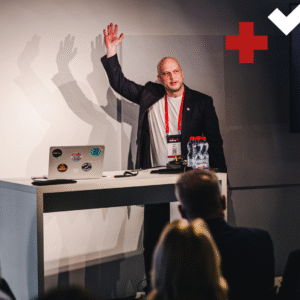Written by Melanie Neumueller
Let’s get down to it!
In the ever-evolving landscape of enterprise software, SAP testing is undergoing a dramatic transformation. As we look towards the future, it’s clear that traditional testing methodologies are no longer sufficient to meet the demands of modern businesses. Let’s explore the cutting-edge trends that are reshaping the world of SAP testing and quality assurance.
AI-Powered Test Management: The New Frontier
We can’t simply stamp Artificial Intelligence as a buzzword and now, its revolutionising how we approach SAP testing. AI-powered tools are now capable of:
- Generating test cases based on system usage patterns.
- Predicting potential defects before they occur in production.
- Optimizing test coverage to focus on high-risk areas.
This shift towards AI-assisted testing means faster, more accurate, and more comprehensive quality assurance processes.
Cloud ALM: Testing Without Boundaries
Cloud Application Lifecycle Management (ALM) is transforming the way teams collaborate on SAP testing projects. With Cloud ALM, teams can engage in real-time collaboration across global teams, gain instant access to testing environments and resources, and benefit from scalable solutions that grow with their testing needs. The cloud is not just a storage solution; it’s becoming the primary platform for executing complex testing scenarios.
Automation: The New Standard
Test automation has evolved from a nice-to-have to an absolute necessity. The benefits are clear:
- Drastically reduced testing time and costs
- Improved accuracy and consistency in test results
- Ability to run tests 24/7, accelerating release cycles
With the advent of low-code and no-code testing tools, even team members without extensive programming knowledge can contribute to automation efforts.
Continuous Testing: Always On, Always Ready
The concept of continuous testing aligns perfectly with agile and DevOps methodologies. By integrating testing into every stage of the development lifecycle, it provides immediate feedback to developers and ensures quality at every step, not just at the end. This approach significantly reduces the time and cost associated with fixing defects late in the development cycle.
Shift-Left Testing: Early Detection, Better Protection
The “Shift-Left” philosophy emphasises the importance of starting testing early in the development process. This involves involving testers from the requirements gathering phase, conducting unit and integration tests as code is being written, and catching and fixing issues before they become costly problems. By shifting testing to the left, teams can improve overall software quality and reduce time-to-market.
The Human Element: Skilled Testers Are More Crucial Than Ever
Despite the rise of automation and AI, the role of skilled testing professionals is more important than ever. Human testers bring:
- Critical thinking and creativity to test design
- The ability to interpret complex results and patterns
- Strategic insight into risk assessment and test prioritisation
The future of SAP testing lies in the perfect blend of human expertise and technological advancement.
Conclusion: Embracing the Future
As we look to the future of SAP testing, it’s clear that staying competitive means embracing these new technologies and methodologies. Organizations that adapt quickly will be better positioned to deliver high-quality SAP solutions efficiently and effectively.




